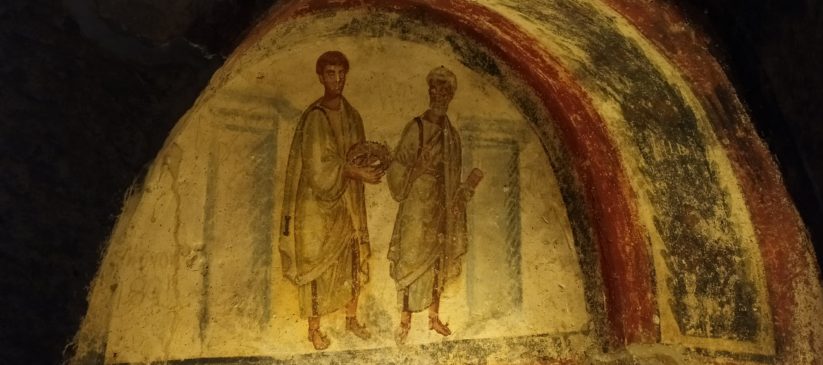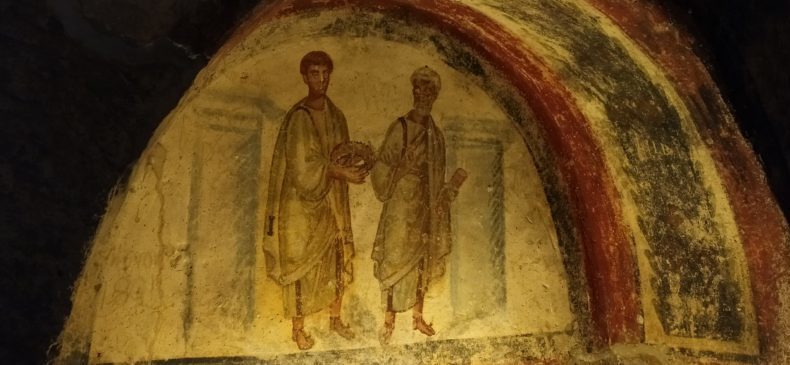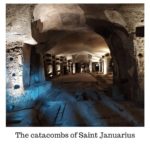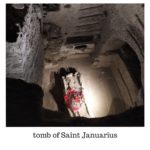The Catacombs of Saint Januarius are among one of the many hidden jewels present in the underground Naples. They were actually dug from the side of the hill of Capodimonte, yet were still concealed to the eyes of many.
In Naples the catacombs are completely different to the one you can find in Rome. There, you find yourself in a very narrow tunnels, while in Naples the channels hosting the first Christian tombs are very wide and open. The structure splits in two levels: a lower, more ancient one, dating back to the II century A.D., and a higher one.
The Catacombs of Saint Januarius, as in the all catacombs, begin where the tomb of the martyr is located. In Naples’ case, it’s Saint Januarius.
Guided tour
The guided tour of the catacombs starts from the upper level where it is possible to observe the three different types of the graves which characterize this place. The first, simpler one is a pit dug into the flooring. Dug into the tuff walls are then the loculi and arcosolia.
Loculi are common rectangular recesses in which the body of the deceased was placed. The loculi were closed with bricks and then, in certain cases, decorated with those symbols which were once common signifiers of the Christian faith.
Arcosolia are some of the richest and best decorated tombs, made from cavities dug into the tuff and strongly resembling the chapels commonly seen in churches. The arcosolia are usually decorated with frescos portrayig the deceased, or the patron saints of the city.
The tomb of Saint Januarius
Saint Januarius was behaeaded in Pozzuoli’s Solfatara and buried in a field along with the other Christians killed that day. The remains of the martyrs were left in that field until the representative of the men’s hometowns came secretly take them back. No one, however, came to take Januarius’ mortal remains, which therefore remained in the field for the longest time.
One day, since Naples’ bishop, John I, knew that Naples still didn’t have his own martyr, eh decided to exhume Januarius’ miserable remains and bring them to the city. That’s how Januarius hard is own tomb and Naples his own martyr.
Saint Januarius’ tomb is located in the lowest level of the catacombs but is still visible from the upper level. The burial room is closed off from all sides and was found when the covering fell making the hidden room beneath visible. This room was actually not all that secret since the Lombards, in the 831 A.D., entered it to steal some of the saint’s remains.
Saint Januarius’ neighbourhood
If you want to know the story of this saint, you shouldn’t just visit the catacombs but Aldo his neighbourhood, which is called Rione Sanità. You should lose yourself (with a guide, of course) in the narrow streets of the neighbourhood to find out a but his treasures.
There is the Fontanelle Cemetery, with is skulls and the cult for the Purgatory’s souls, the Basilica of Santa Maria della Sanità with Saint Gaudioso’s catacombs, Totò’s birth house, Porta San Gennaro and much more.
The Catacombs of San Gaudioso
If you want to learn about Neapolitans and the cult around Saint Januarius, you must take a stroll around Rione Sanità.
For the guided tours, click here






